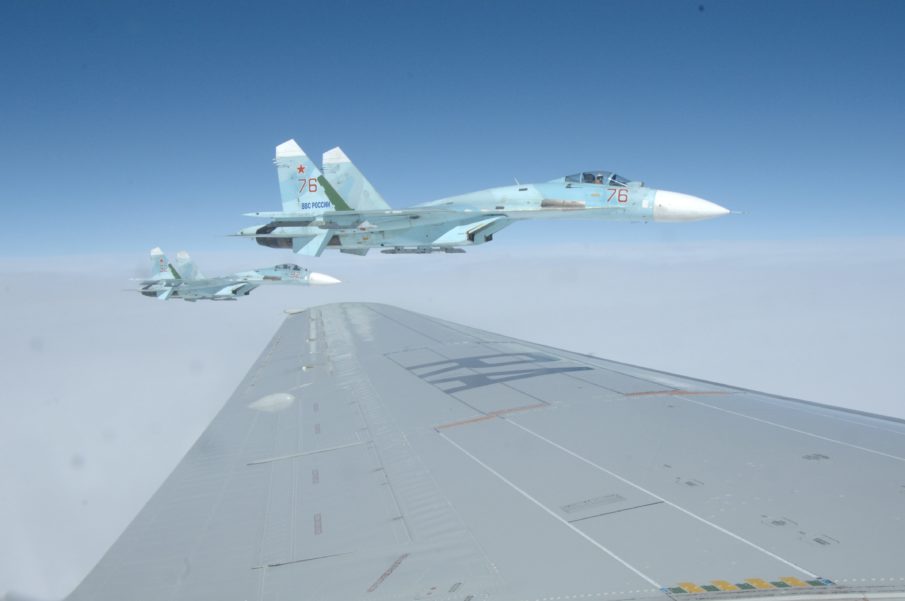It’s happened again. Last Friday, a Russian Air Force fighter jet intercepted an American Reconnaissance Plane over the Baltic Sea, in international airspace, and engaged in a dangerous game of high-speed intimidation. The message was clear: get out of here. At one point, the Russian jet did a barrel roll over the American plane at a distance of just 25 feet, a hazardous act that risked the lives of all the aviators involved on both sides.
This was the fourth such provocative incident between the Russian and American militaries in the Baltic in as many weeks. The April 29 encounter featured a Russian Su-27, a single-seat fighter capable of flying at twice the speed of sound and famed for its impressive maneuverability. Its quarry, a U.S. Air Force RC-135, was its opposite in every way: slow, lumbering, unarmed and incapable of evasive maneuvers. The military equivalent of the Boeing 707, the venerable RC-135 is neither fast nor lethal but carries a crew of electronic intercept specialists. In layman’s terms, it’s a spy plane.
Many militaries worldwide use spy planes like the RC-135 to collect electronic intelligence and, as long as they stay in international airspace, dangerous encounters are rare. However, last Friday’s incident was very hazardous indeed. Executing a barrel roll on top of the American four-engine jet at a distance of just 25 feet.
Russian jets buzzing a U.S. military ship and planes in the Baltics are escalating tension between the two nations, the chief of naval operations said Monday.
“My hope is that we can stop this sort of activity,” Adm. John M. Richardson told reporters at the Pentagon.
“I don’t think the Russians are trying to provoke an incident. I think they’re trying to send a signal,” he said. “I think it’s pretty clear that they are wanting to let us know that they see that we are up there in the Baltic.”
The Baltic countries regained their independence in the early 1990s after nearly five decades under Soviet occupation.
The Defense Department said a Russian SU-27 conducted a barrel roll Friday over a U.S. Air Force RC-135 that was flying a reconnaissance mission above the Baltic Sea. In mid-April, a Russian jet flew about 50 feet from the wing tip of a U.S. aircraft. Also in April, two Russian jets flew close to the USS Donald Cook in the Baltic Sea.
Richardson said the actions increase the chance of a “tactical miscalculation,” but that if an incident were to occur, the U.S. would tamp down any rise in tensions between the two countries.
“We look for sort of a normalization there,” he said.
Russian Foreign Minister Sergey Lavrov last week defended the actions of Russian warplanes that buzzed the USS Donald Cook, saying the pilots decided to take a look at the U.S. Navy destroyer “from a safe distance.” The planes were less than 100 feet away from the deck of the ship, traveling at hundreds of miles per hour.
Secretary of State John Kerry condemned the Russian actions and said the Navy ship could have opened fire.
Read More: ABC
Featured Image – A Russian Sukhoi Su-27 Flanker Fighter Aircraft – U.S. Navy, DoD










COMMENTS
You must become a subscriber or login to view or post comments on this article.